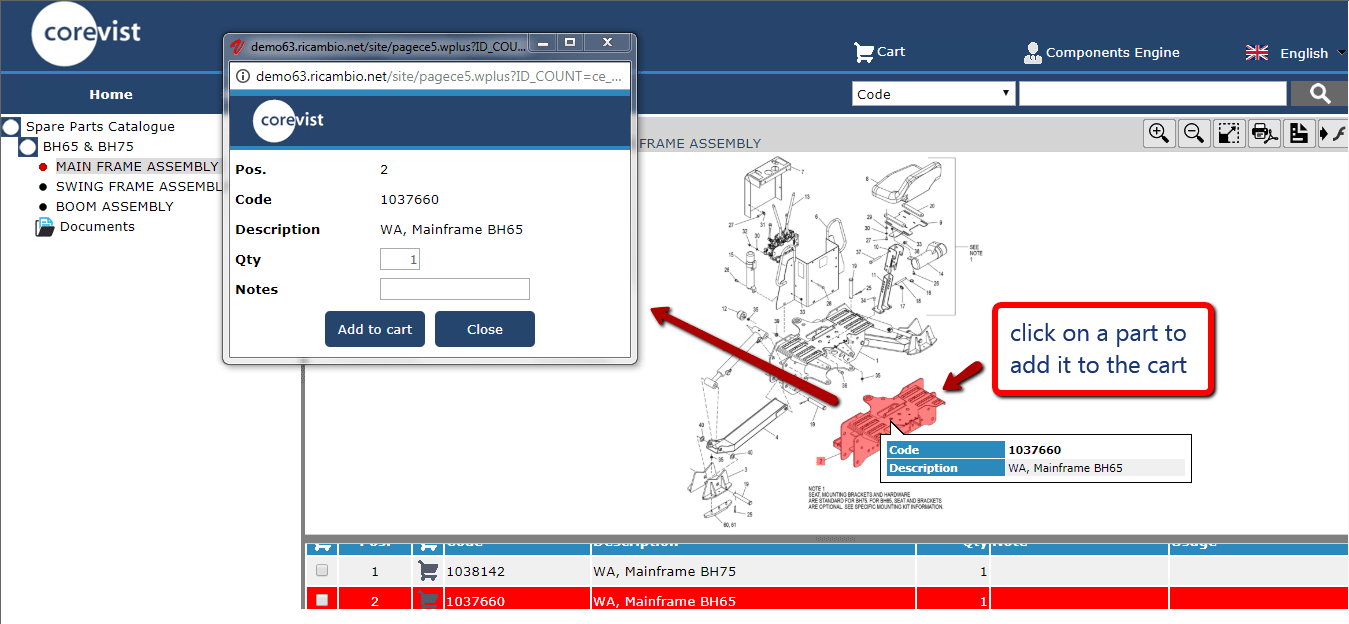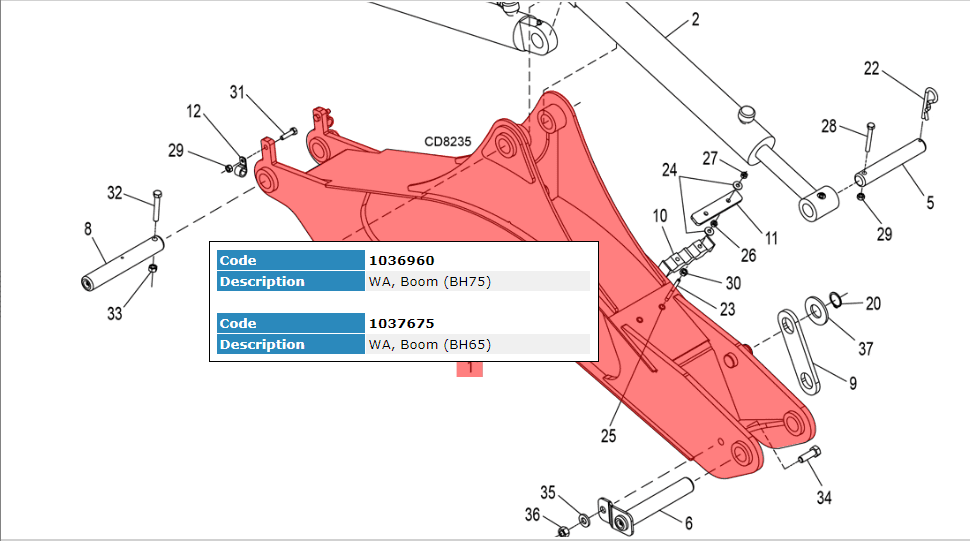Share
Author
George Anderson
Share
Eliminating buyer friction in spare parts
Selling B2B spare parts online is challenging. From automotive spare parts, to industrial and every niche in between, you’re up against unique challenges. The more commoditized your market is, the harder you have to work to retain customers and gain new ones. But even non-commoditized markets offer challenges for spare parts. There are many ways to lose the sale, but all of them come down to one factor: Buyer friction.
In this article, we’ll talk about 4 common Friction Points that cost manufacturers the sale when it comes to spare parts. In each instance, we’ll give you actionable tips to start moving in the right direction today.
Let’s dive in!
Friction Point 1: Difficult part selection process
Let’s start at the very beginning of the spare parts sales process. Put yourself in the shoes of your buyer and imagine a typical workday. Your buyer most likely orders a wide variety of parts for different machines. Since there are too many sets of parts to memorize, he has to consult exploded technical diagrams to get part numbers.
Here comes the friction in your ordering process. Your buyer has to get SKU numbers from technical diagrams (whether electronic or print), then input them manually into an email or fax-in order form—or worse, call in and give the SKU numbers over the phone.
If your competition has already moved beyond phone/fax/email for parts ordering, this antiquated process could cost you the sale.
The solution: Click-to-order exploded diagrams
What if your buyer could order spare parts directly from an electronic exploded diagram? That’s exactly what Corevist enables. Here’s what it looks like:

When a buyer clicks the part, a box pops up in which they can change the quantity, add a note, and then add the item to their cart. Once they get to the cart screen, the buyer gets real-time inventory availability and contract pricing that are pulled straight from SAP.
Which leads us to the next way you can lose the sale in B2B spare parts.
Friction Point 2: Outdated information in your ordering portal
A web-based ordering portal is all well and good—but if it doesn’t have live, real-time data from SAP, it’s dead in the water.
That’s a strong statement, but we stand behind it. Why? Because your buyers desperately need real-time data on several key points. Without that data, they don’t have the assurance that you can get them the spare parts they need, in the quantity they need, at the advertised price, in the specified time.
Here are the data points which your ordering portal should load in real time from SAP:
- Inventory availability
- Inventory availability by warehouse (if you allow warehouse selection)
- Available to promise (ATP)
- Negotiated, customer-specific contract pricing
- Quantity price breaks
If you’re relying on batch updates to synchronize your ordering portal/ecommerce store with SAP, you can’t provide any of this data in real time. That leaves buyers with uncertainty when it comes to getting the parts they need. If you can’t provide that certainty, and a competitor can, your customers will order from the competitor. It’s that simple.
The solution: Integrate your order portal to SAP in real time
To offer true self-service ordering, you have to provide your buyer with accurate information for everything listed above. Since that data lives in SAP, the only way to offer 100% self-service is to display that SAP data in your ordering portal, live, in real time. (Hint: That’s what Corevist Commerce does, whether as a simple ordering portal, or full-blown ecommerce with a product catalog.)
Friction Point 3: No self-service payments option
This is an area where B2B in general is still catching up to B2C—and spare parts markets are no exception. Simply put, if you’re going to offer self-service ordering (which you should to stay competitive), you need to consider the payments phase of the order.
Can your buyers pay for their orders online, or do they have to call customer service (or worse, send a fax)?
To be clear, online payments doesn’t have to mean credit cards (though you should analyze your customers’ needs before writing them off). Whatever your order-to-cash (OTC) process looks like, you can move the customer-facing part online with a self-service payments solution.
A good B2B payments solution, integrated to SAP and built into your ordering portal, can take a wide variety of payment methods:
- Credit/debit cards
- eCheck
- ACH transfer
- PayPal
- Invoice
- And much more
The solution: A self-service payments solution integrated to SAP
When you give your customers the option to pay with self-service, you remove friction from the buying process and become Easier To Do Business With (ETDBW). When buyers find that your ordering process is friction-free, they’ll be back for more spare parts. It’s one more way you can make your business the easy vendor and ensure you get the sale every time.
Friction Point 4: Forcing buyers to call/email for order updates
It’s the age of Amazon. In their lives as consumers, your buyers are used to getting live status updates on their Amazon orders. It might seem like a small piece, but order tracking is a critical part of the puzzle when it comes to getting the sale.
Why? Because inability to track orders leaves a taste of uncertainty in their mouths. Over time, as they find that competitors provide better visibility into order status, that gives them one more reason to buy elsewhere.
The solution: Order tracking dashboard integrated to SAP
Since order status lives in SAP, you need to provide your customers with visibility into that SAP data, including real-time updates from your shipping carriers. The solution is an order-tracking dashboard with live data from SAP and carriers. (Hint: That’s what Corevist Commerce provides in our eTrack module.)
Moving forward: FREE case study
Wondering what spare parts ecommerce looks like in the real world? Download this FREE case study on Bell & Howell. You’ll learn how this once-struggling manufacturer transformed their spare parts business with Corevist Commerce.
[want_more title=”Learn more” subtitle=”FREE Case study: Bell & Howell” description=”Learn how Bell & Howell revolutionized spare parts with Corevist Commerce.” button_text=”Download Now” button_link=”/” button_class=” bh-spare-parts btn btn-primary” title2=”See it for yourself” subtitle2=”Talk to us” description2=”Curious what Corevist Commerce can do for you? Let us show you a personalized demo. You’ll see ecommerce with real-time SAP data.” button_text2=”Schedule Demo” button_link2=”https://www.corevist.com/demo/” button_class2=”demo-popup”]








